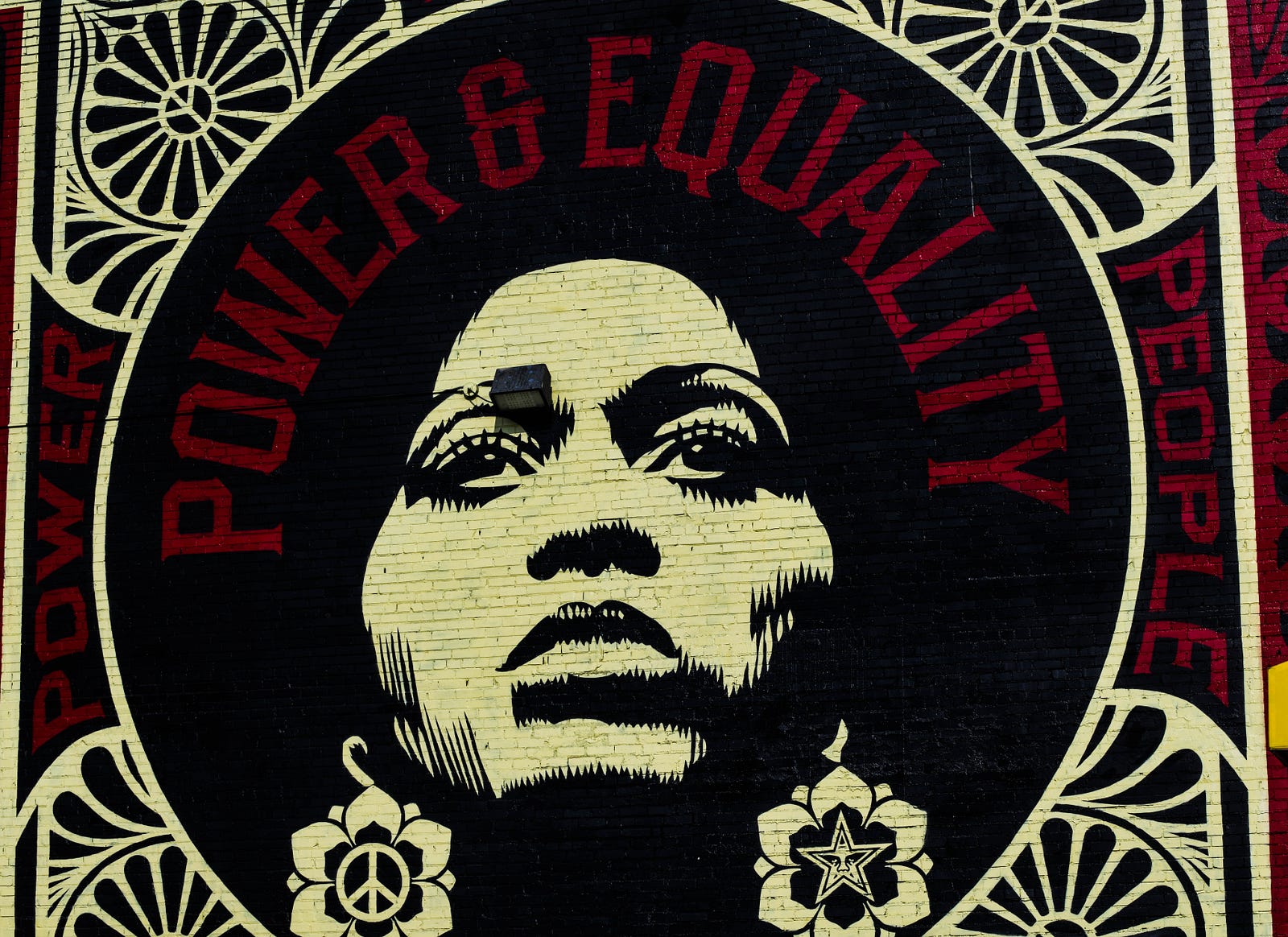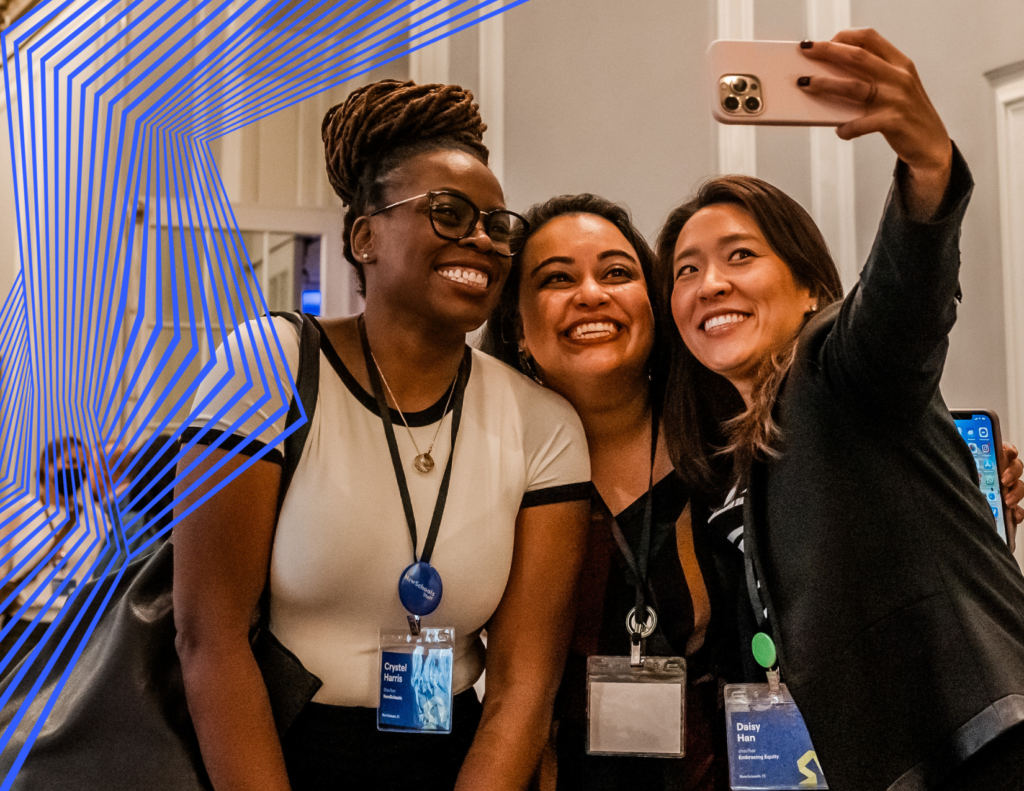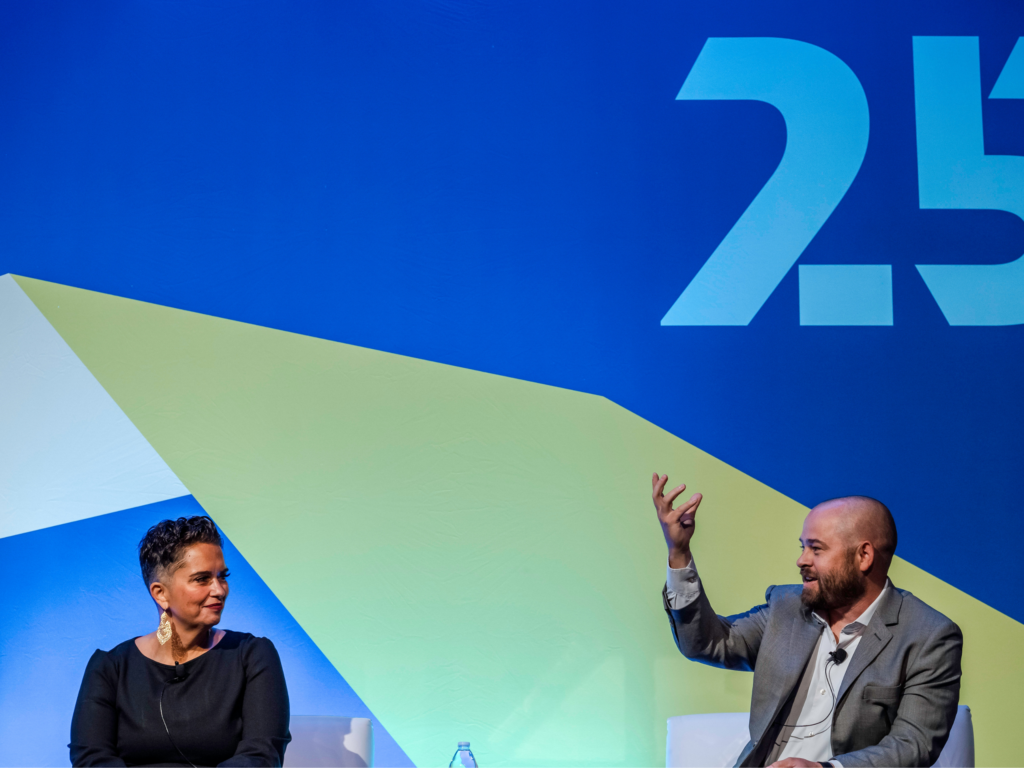Educators are preparing for a fall as their school communities — and the rest of the world — grapple with the twin pandemics of COVID-19 and systemic anti-Black racial injustice. As a national nonprofit that supports and invests in promising teams of educators and innovators who want to reimagine learning, NewSchools is well-situated to help educators cope with the onrushing wave of change. To help educators prepare to reopen their schools this fall, we have launched the Distance Learning Lessons webinar series. The webinars and accompanying resources share creative, effective, and actionable solutions from our school leaders and other experts.
We decided to launch our series with a webinar entitled, “Our Moral Imperative: Racial Equity and the Public School System.” We believe that designing and redesigning schools for equity is an essential step in addressing systemic inequities. As one of our school leaders, Shawn Hardnett, said, “His school is his protest.” We wanted to consider what it would look like if we designed schools that truly met the needs of all students — schools where learning outcomes are not predictable by race, ethnicity, income, gender, language or ability, and where educators work closely with families to design schools that embody their aspirations.
In this first webinar, Caroline Hill, founder of 228 Accelerator and Thaly Germain, founder and CEO of Onward, led participants in a discussion of the challenges and the opportunities that schools are currently facing. They grounded the conversation in the compounding adverse effects of four centuries of systemic racism coupled with the COVID-19 pandemic, which disproportionately sickens and kills Black people. Hill and Germain then asked participants to consider three provocative design questions related to the purpose of school, space, and healing. Those questions are explored below with examples from the webinar and schools in our portfolio.
“How might we resource the public school to become a catalyst for America’s Healing and Reconciliation?”
The long legacy of racism in America’s education system is well known, and the pandemic has made learning even more difficult for our most vulnerable students. Shuttered schools and the subsequently well-intentioned but hastily-made plans for distance learning have harmed low-income students, students with special needs, and students of color the most. To be clear, schools were not working well for Black and brown students before COVID-19. As one participant wrote in the webinar’s chat, “The differences are being magnified and laid bare.” Simply re-creating the same systems in a new context won’t result in progress toward equity.
So how do you give all students access to the opportunities once reserved for the privileged? Webinar participants mentioned bringing more Black teachers into schools, ensuring equitable resources, moving beyond technical answers to the root causes of inequities present in schools, providing historically informed and accurate instruction, combining social-emotional learning with rigorous academic work, and a broadening of academic standards. As one said, “Stop solely focusing on narrow academic standards that do not address our nation’s true history.” Webinar participants also pointed out that leaders in education need to advocate for children and their families outside of school systems to achieve real equity.
“How might we design a pedagogical approach that creates spiritual and emotional intimacy while respecting the need to be physically distant?”
COVID-19 has exacerbated the existing separation between people from different backgrounds, which has contributed to racism, sexism, classism, and homophobia, among other forms of hate. Shelter-in-place orders have added physical distance to the emotional and spiritual gap that already existed. Hill and Germain suggested that creating an equitable society and learning environments requires radical inclusion, enabling us to become more proximate to the experiences of others.
Participants shared ideas for creating more connected learning environments. One participant pointed out that students will be meeting in smaller groups when school restarts in the fall. Others suggested that educators group students to prioritize diversity and deliberately celebrate differences. In this way, they can create intentionally diverse learning communities. Scott Bess, the CEO of one of our ventures Purdue Polytechnic High School (PPHS), provides a good example of prioritizing this. The school is an intentionally diverse school that strategically groups students for complex, problem-based learning. In addition, Scott believes that schools need to step into the role of teaching history accurately and dismantling white supremacy. At PPHS, there is a commitment to rejecting the narrowing of the academic curriculum.
“How might we create an aligned curriculum that comforts the spirit, heals the body, develops the mind, and soothes the soul?”
COVID-19 has elevated the importance of staying physically and mentally healthy, yet that’s proven difficult under such extreme circumstances. Many essential workers don’t have the privilege of working from home. Others face the stressors of job and economic insecurity while juggling increased child or eldercare responsibilities. The ongoing violence against Black Americans has surfaced how many members of our community do not feel safe simply living life because of the color of their skin. As a result, mental health needs have only increased for families, students, and educators. As Hill and Germain shared, there is a need “to heal and think about the ways we can attend to the traumas of the physical body, the emotional body, and the universal body of the community.”
Links between schools and communities can strengthen healing in both places. At Statesman Preparatory Academy for Boys, establishing warm, caring and trusted relationships is central to their model so that students feel emotionally safe and know that they belong. When Statesmen moved to distance learning in March, the team immediately focused on maintaining strong relationships with students. They mapped which staff member had the strongest connection with each student and assigned every staff member five students to check in with during planned advisory sessions and by phone. Every student had at least two daily touchpoints from a staff member. The full school community continued to come together twice each day online, just as they did before the pandemic, during a morning meeting and an end of day check-in. Ninety-five percent of their boys logged in to learn every day. The school also provides mental health support for its teaching staff, predominantly Black men, through Georgetown University so that they can process their own trauma and better support students. CEO and Founder, Shawn Hardnett, says that the school emphasizes “physical distancing” rather than “social distancing,” a distinction that is important for maintaining a focus on healing and community even when students are not in school.
Where do we go from here?
“Truth-telling, reconciliation, and healing in schools will look different than they have in the past,” Hill observed. Schools and other organizations will need to acknowledge how they have upheld inequitable environments. And as Germain pointed out, “Black educators cannot carry the full burden of the work to be done. Everyone needs to own the change in schools.” If you are interested in learning more about how to redesign your school to put equity at the center, please see this list of resources Hill and Germain shared.
We also hope that you will participate in the Distance Learning Lessons series, including the upcoming webinars that will occur throughout June and July:
- June 24th: What Will Learning Look Like This Fall: Scenario Planning for an Uncertain Future
- July 8th: Grade-Level Instruction or Personalized Pathways: Is It Possible to Prioritize Both in Distance Learning?
- July 15th: Meeting the Social-Emotional Needs of Our Students: Spotlight on a School Model
- July 22nd: Meeting the Needs of All Learners: Spotlight on English Language Learners
If you’re a school leader or a school system leader, check out our #DistanceLearningLessons webinar series for lessons and resources that can inform the decisions you’re making now to reopen schools safely in the fall.


